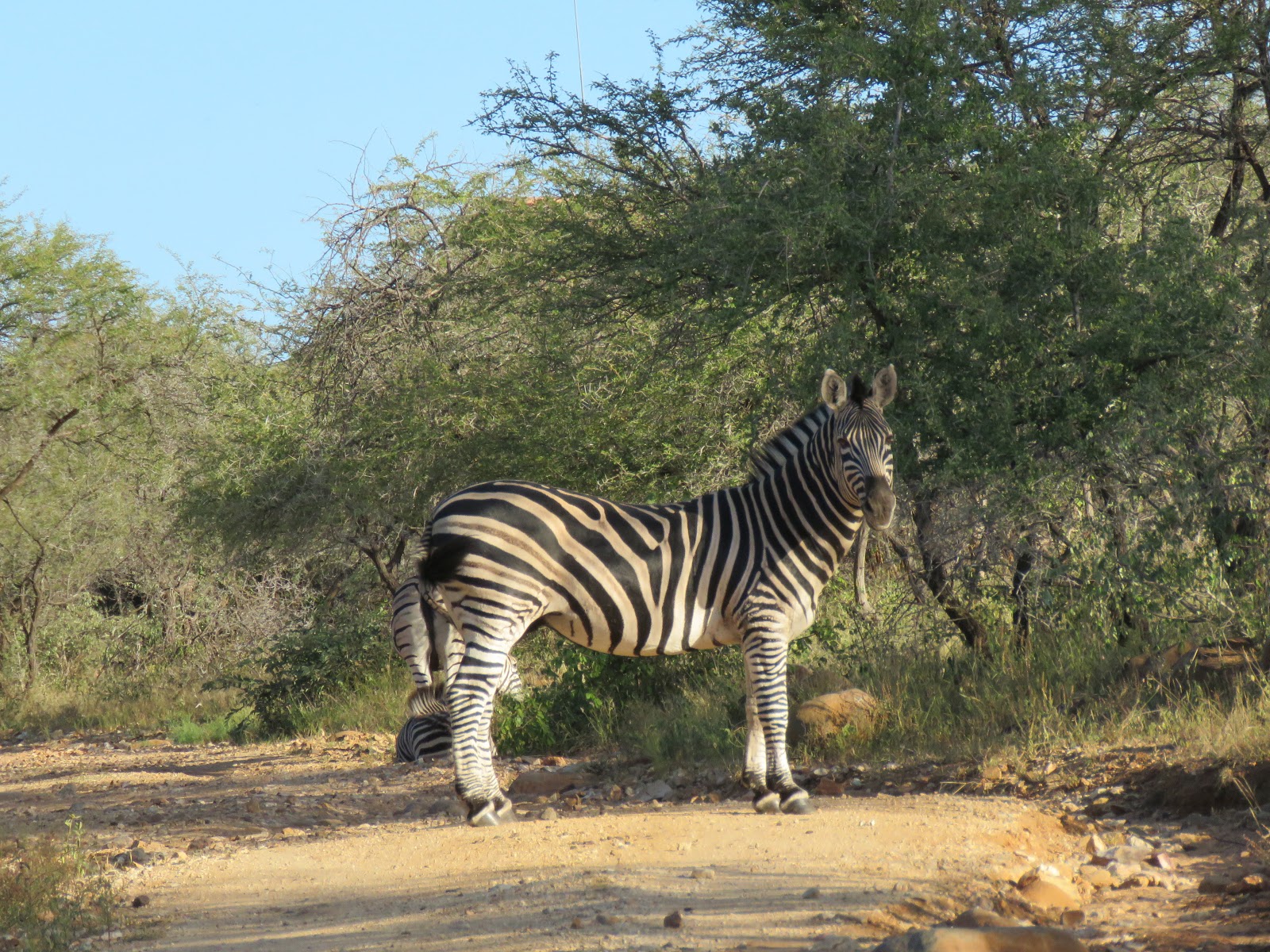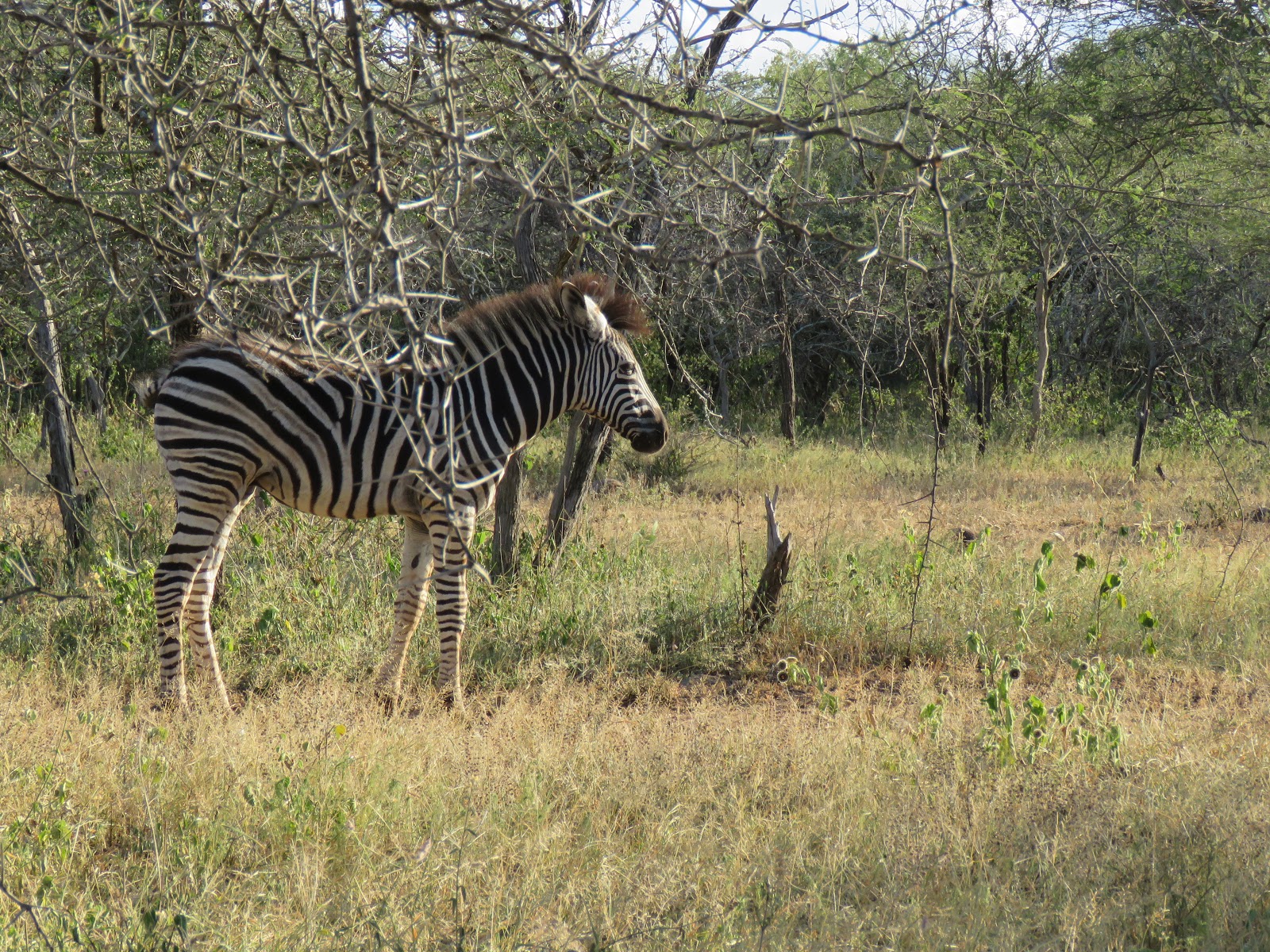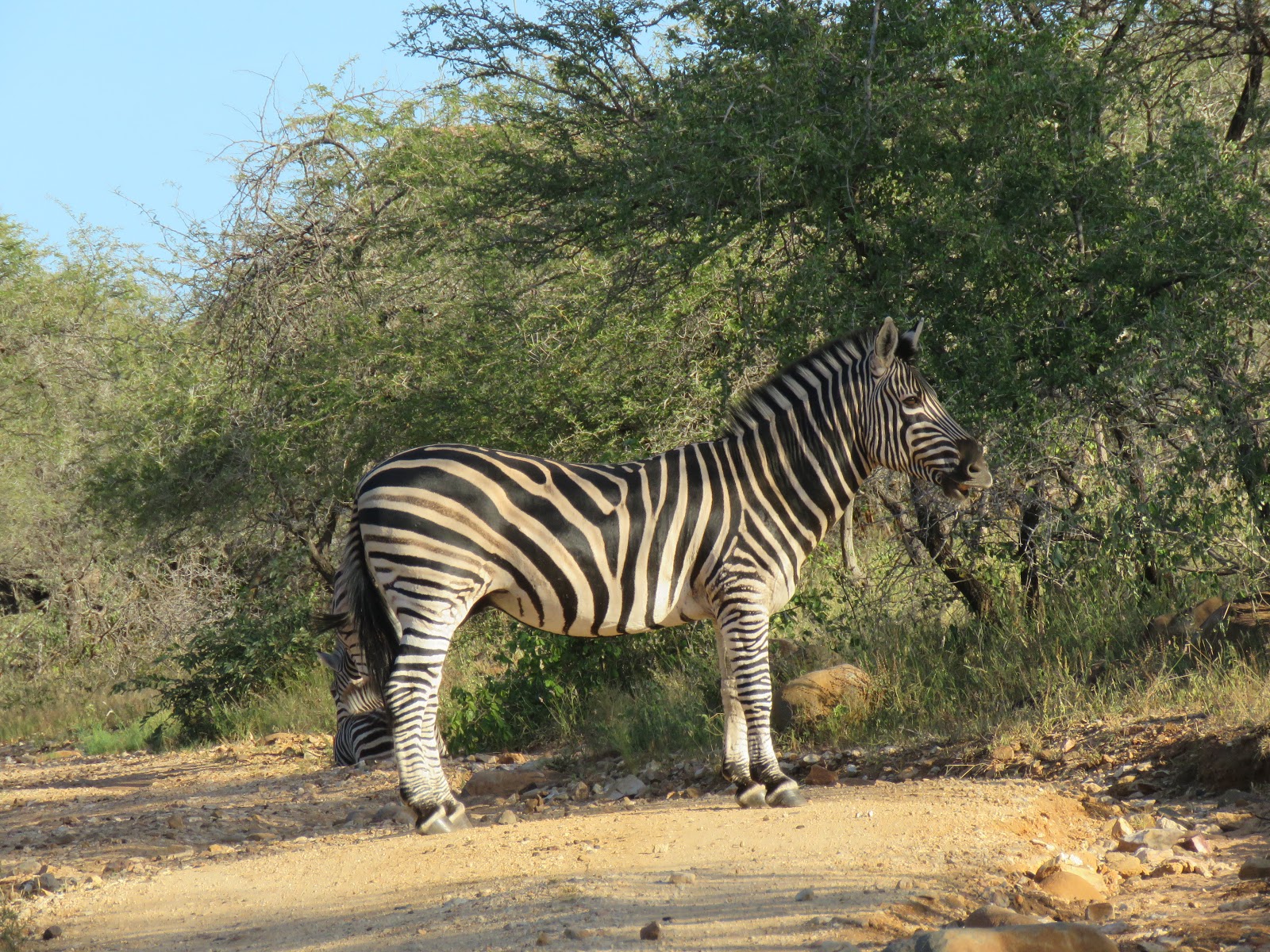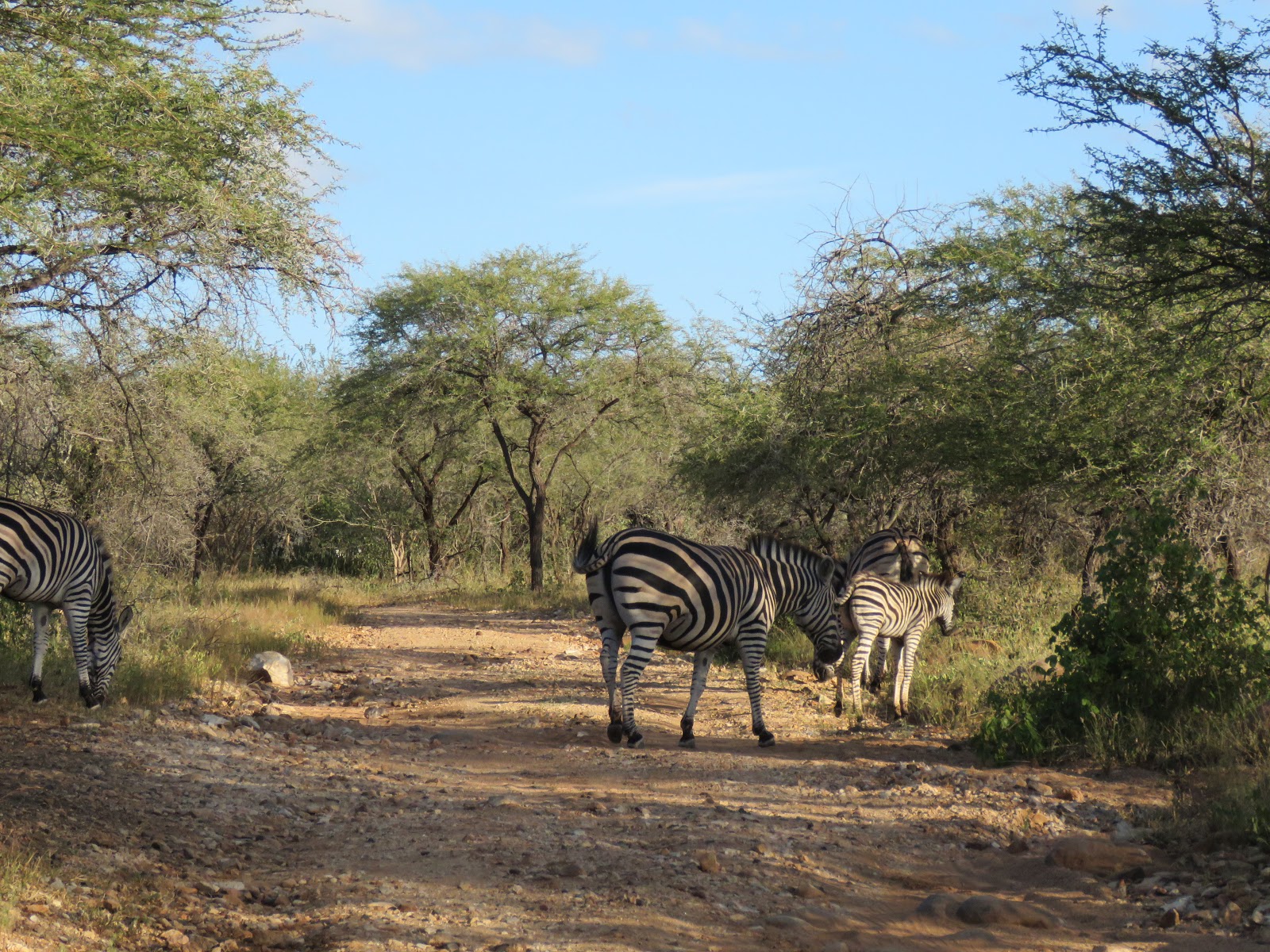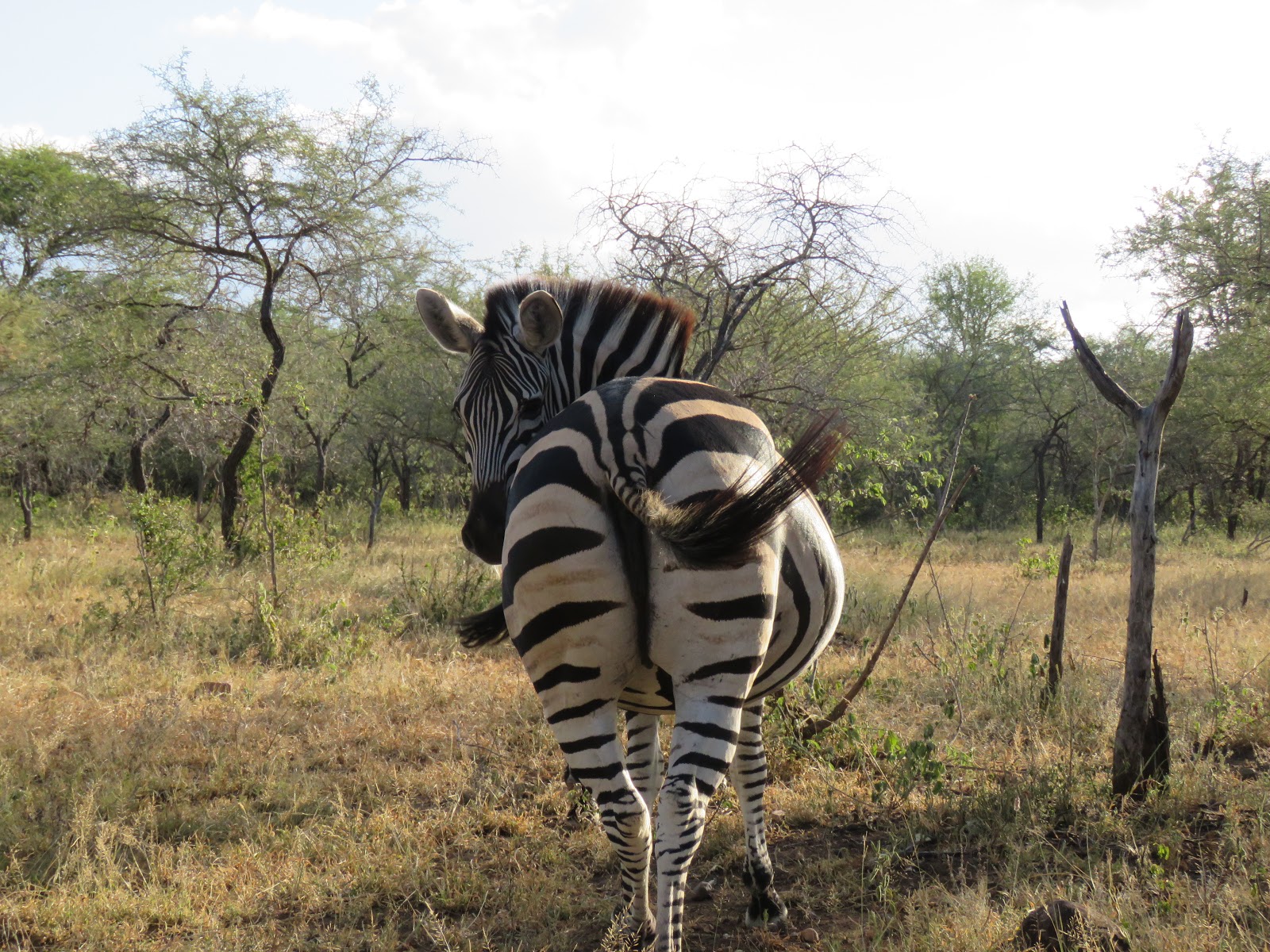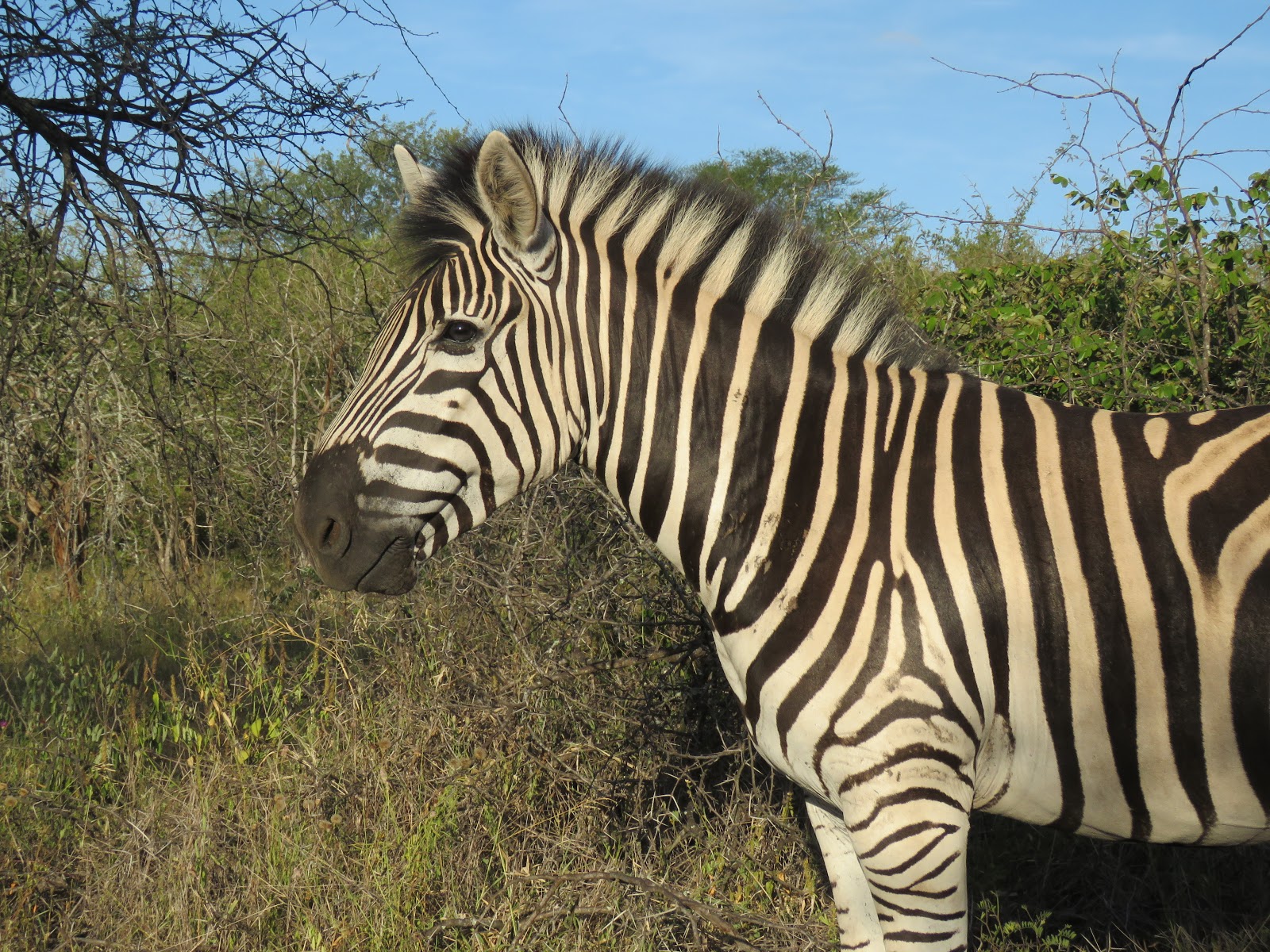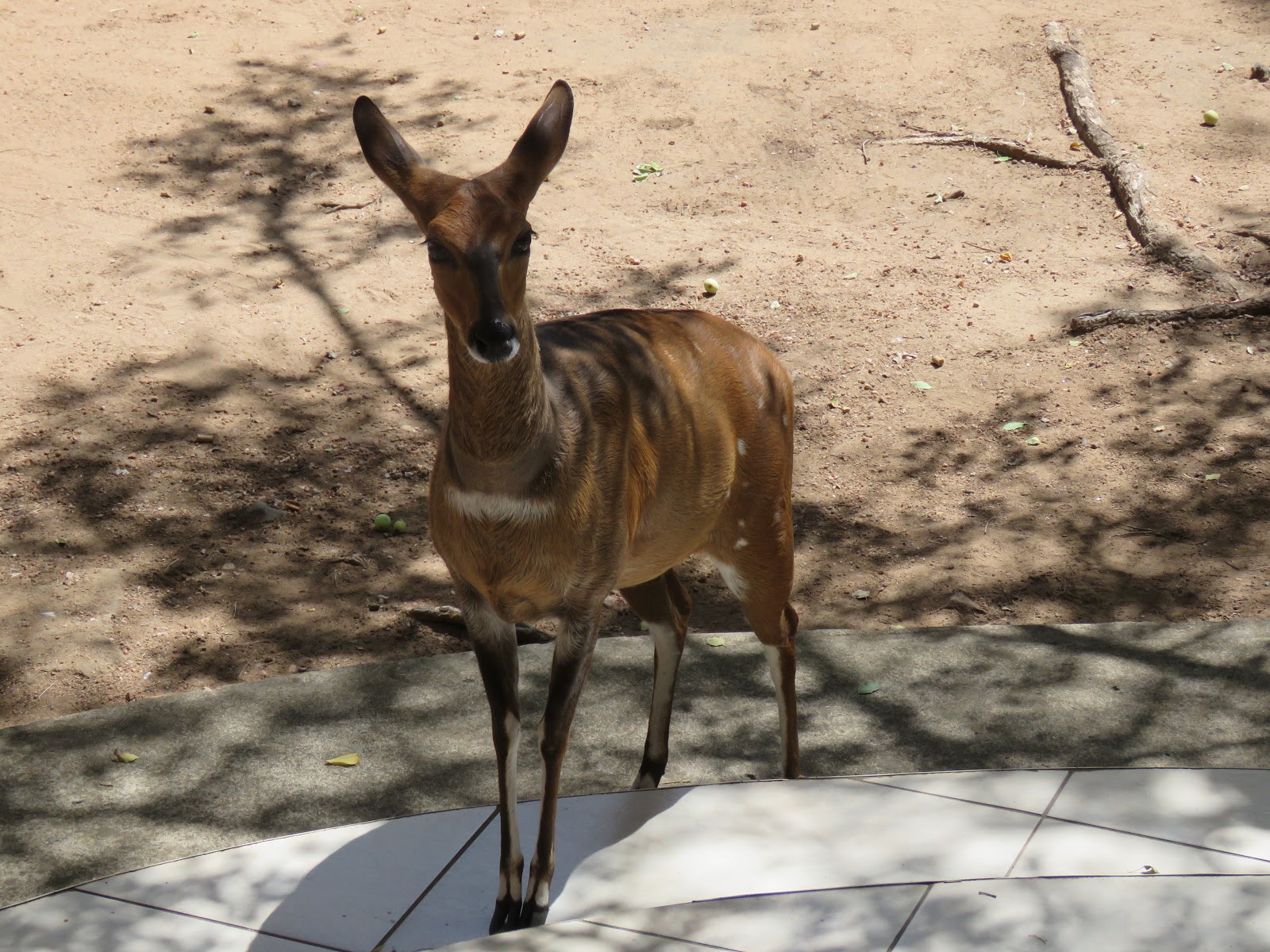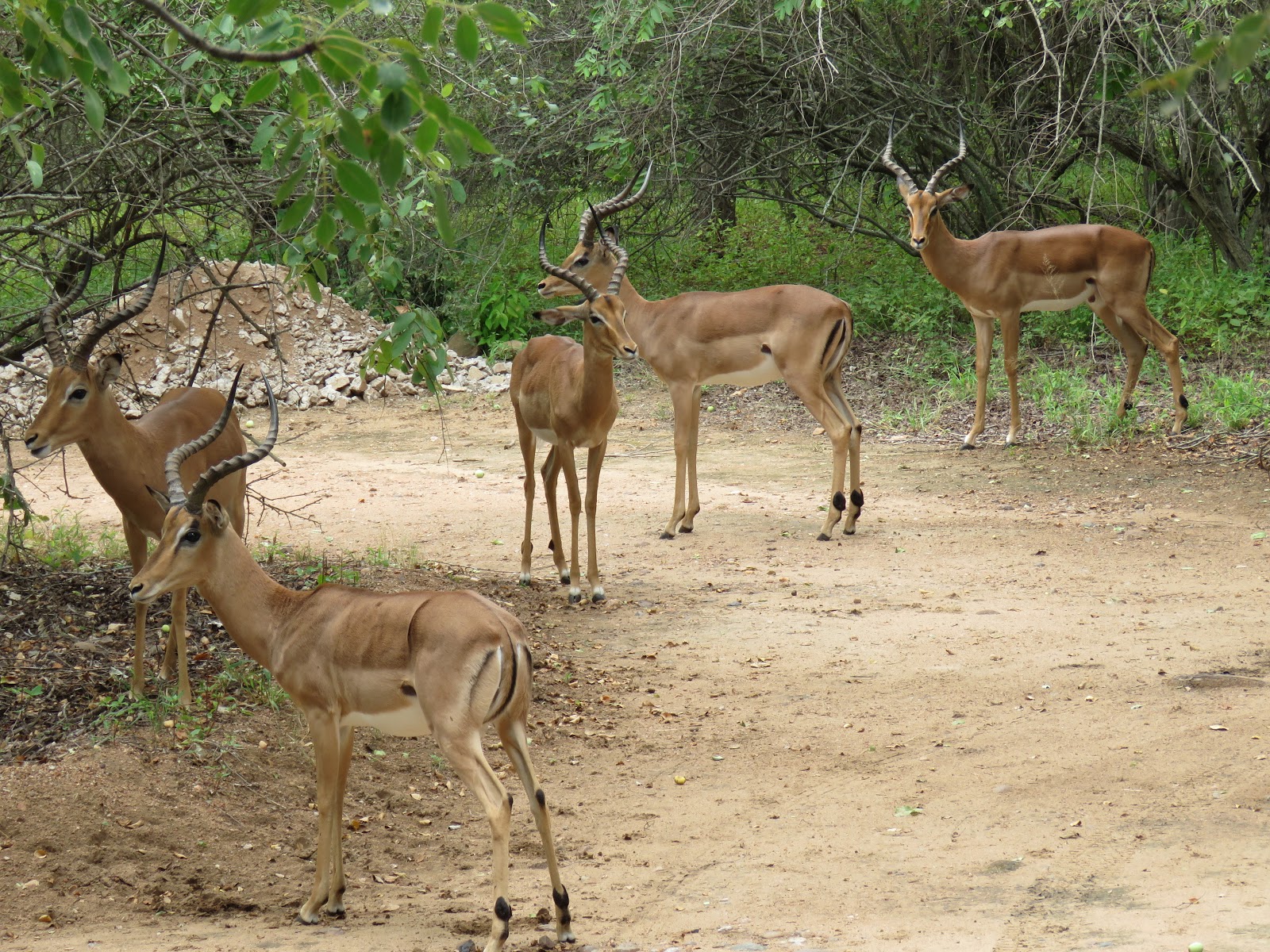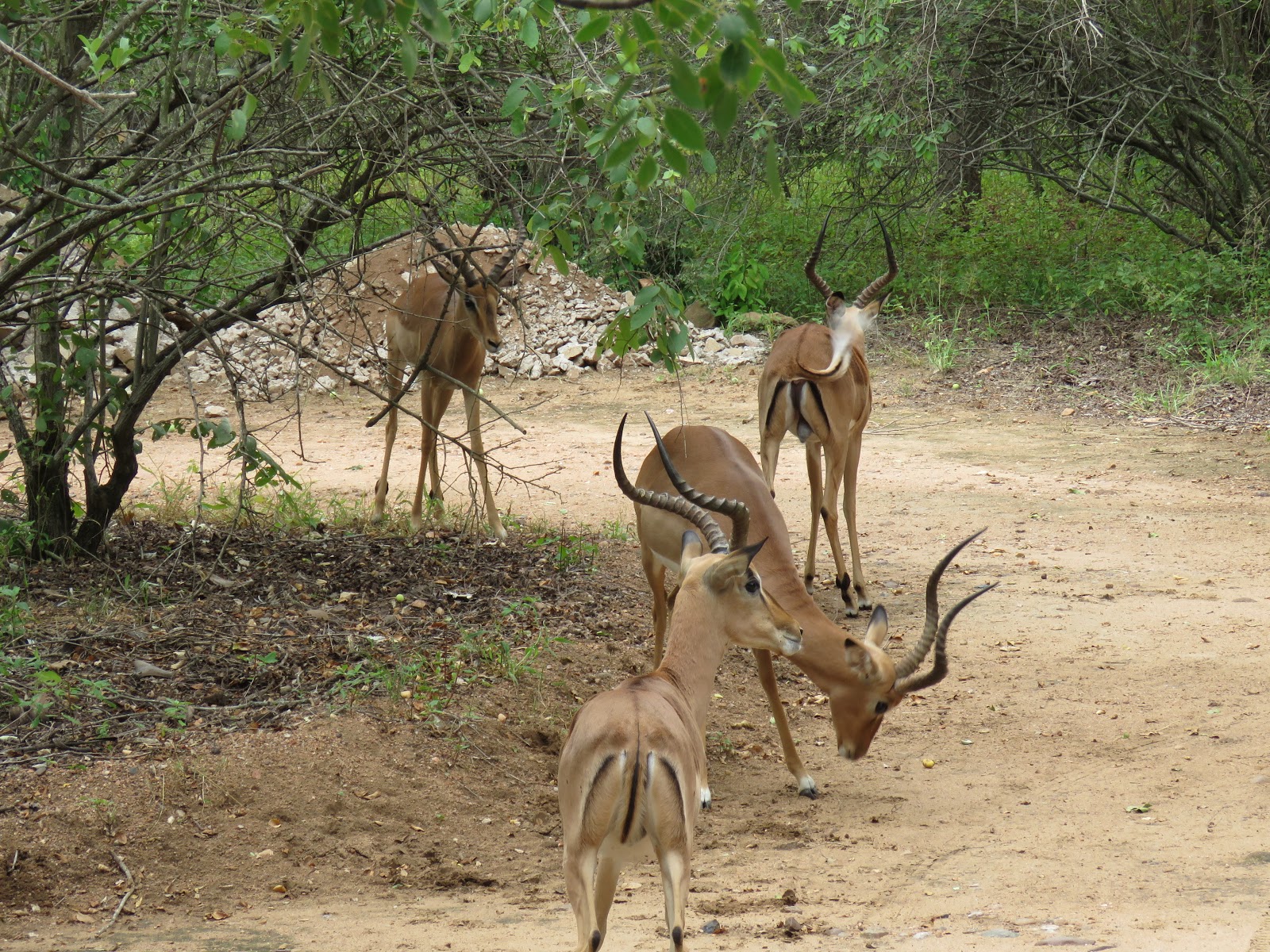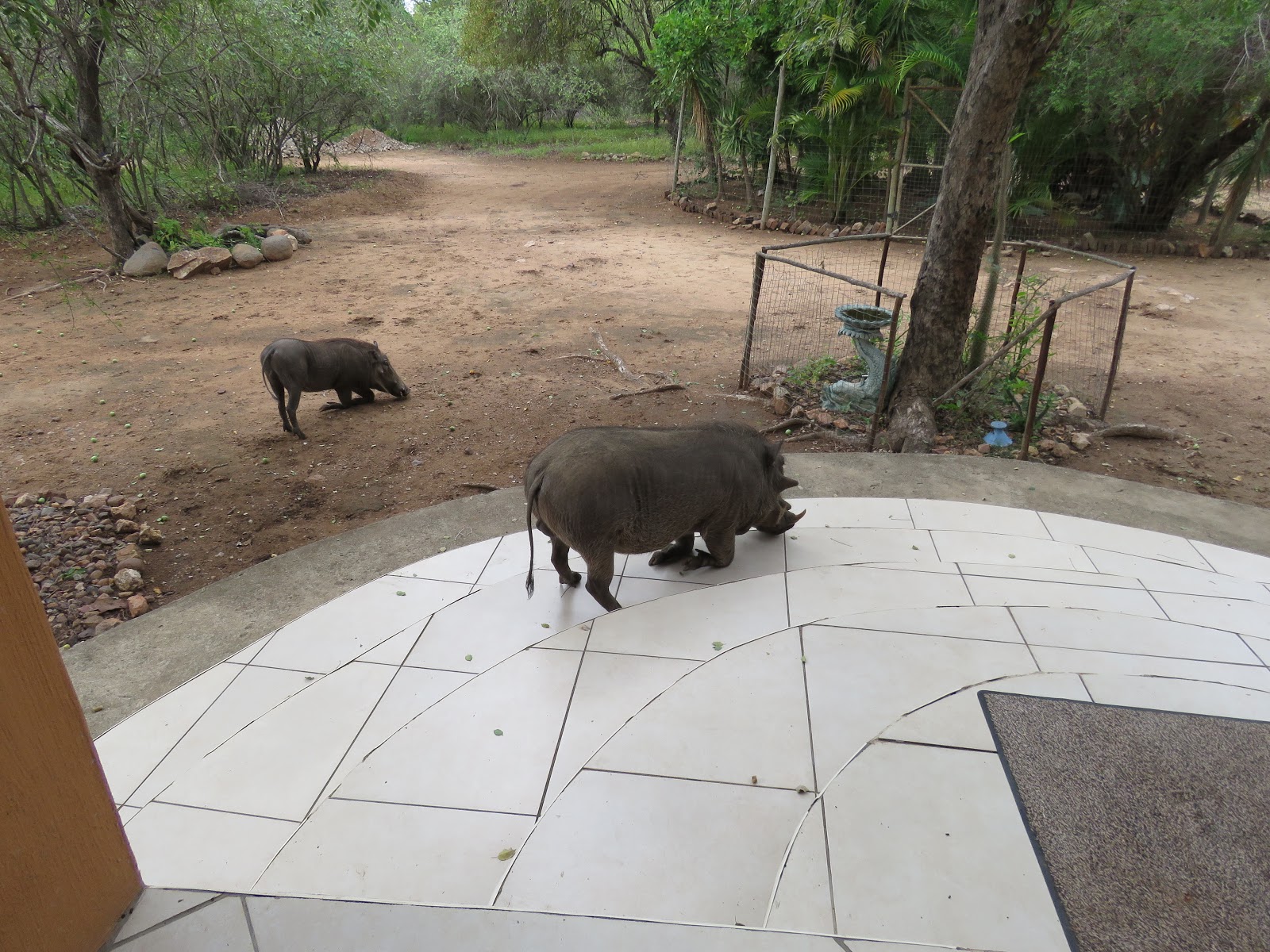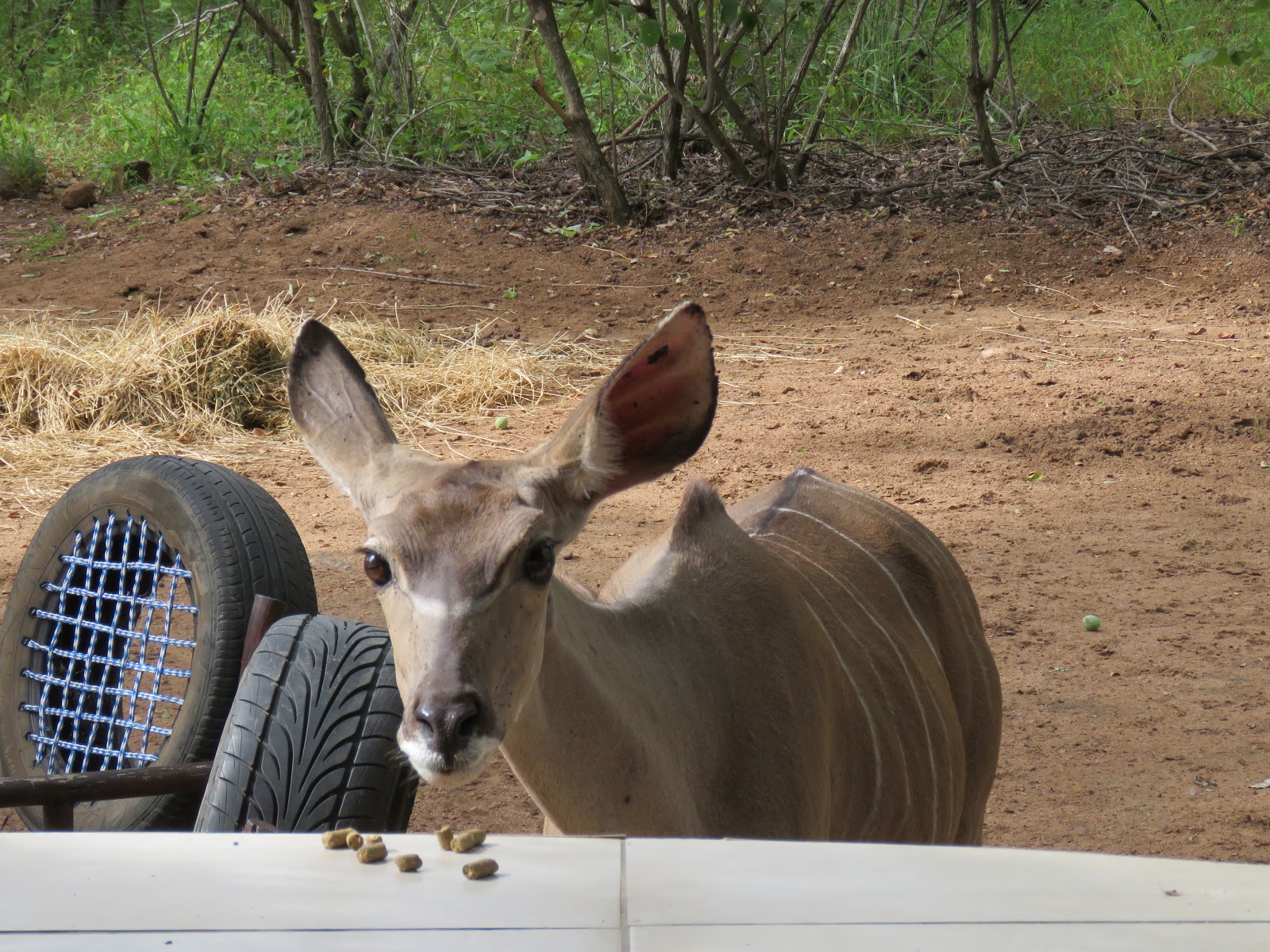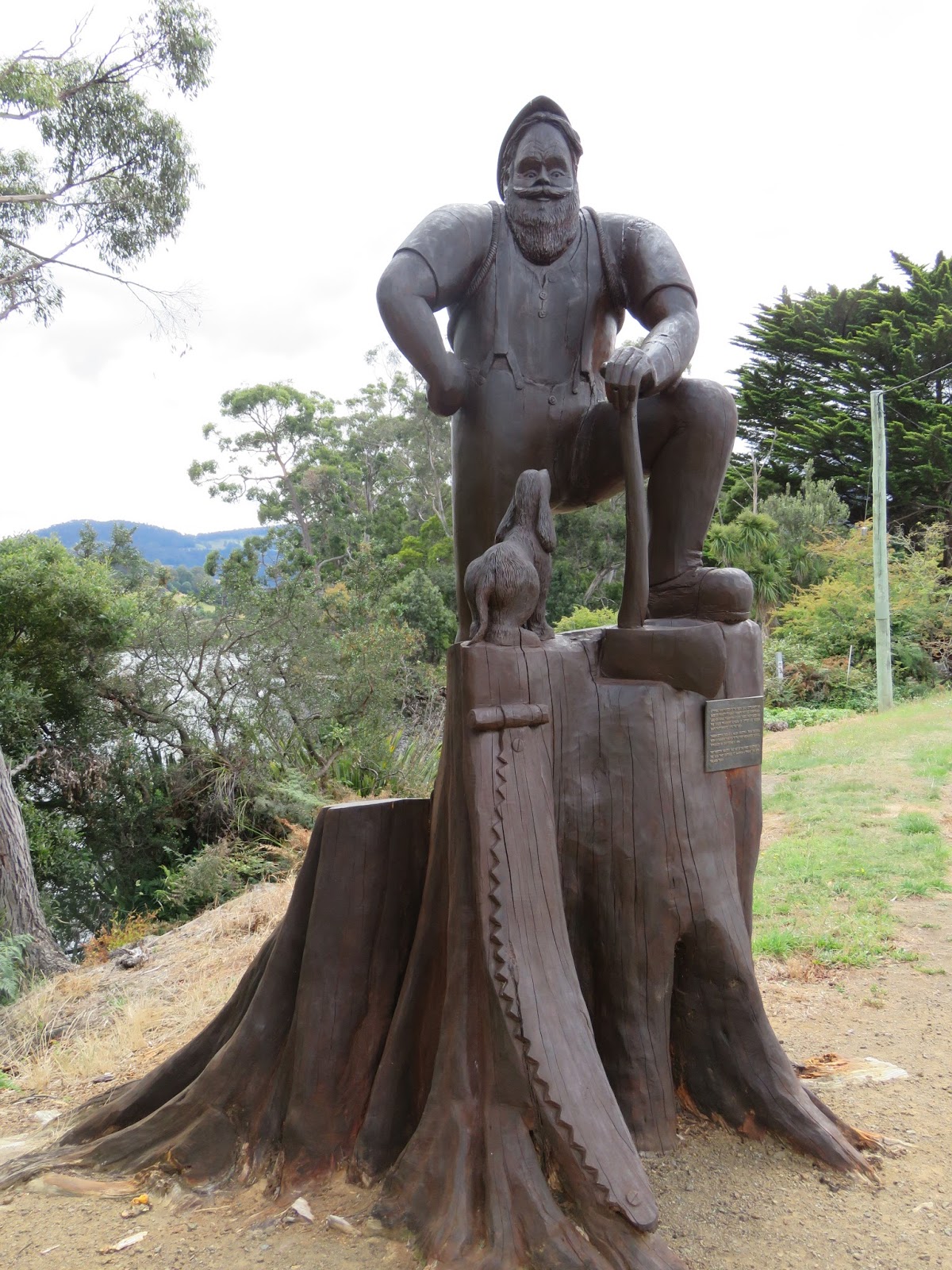 |
| The play was about, to begin with, Don on the left and Ken on the right. |
“Sighting of the Day in the Bush”
 |
| After Josiah cleaned the pond in the yard, removing all the water and replacing it with freshwater, the animals have come regularly to drink, as is the case for this male impala. |
What does the play the Pirates of Penzance have to do with Marloth Park? Last night, quite a bit, when our hosts Kathy and Don put on a taste-tempting spread for 13 of us, while Don and Ken performed their second annual theatrical performance for friends in Marloth Park.
 |
| The MP (Marloth Park) players present the Pirates of Penzance. |
Their beautiful expansive home in the bush, overlooking the Crocodile River, looked as inviting as we recalled from our many previous visits four years ago. With a third-floor veranda with sprawling views of the river, high enough to deter mozzies, we all settled in at the arranged seating to enjoy the performance by our two brave thespians. It couldn’t have been more fun!
 |
| Don’s hysterical toilet plunger wooden leg had us roaring with laughter. |
Here are a few details on this classic comedy production from this site:
 |
| They’d learned their lines and were ready to begin. |
 |
| Don got the authenticity of the pirate down pat with a few clever handmade modifications. |
 |
| Ken was sharp in his performance and also exhibited fine acting skills. |
 |
| They had a hard time keeping a straight face on several occasions, and we laughed along with them. |
 |
| But, you get the drift. Ken was standing behind Don, using his hands as if they were Don’s. This was particularly hysterical! It was dark, and I was so entrenched in the activities I failed to adjust the camera settings for better photos in the dark. |
 |
| The performance ended after about 30-minutes, and we cheered and clapped, ending in a standing ovation. |
And, of course, Louise and Danie, with whom we’ll be tonight at yet another unique and exciting event in the bush, which we’ll be sharing in tomorrow’s post.
 |
| After the performance and the meats were being cooked on the braai, we mingled, chatting in small groups while snacking on appetizers. |
 |
| After the meal, the ritual “drinking from a shoe’ commenced, but we graciously declined to participate in drinking from Micheal’s shoe. From this site: “Drinking from a shoe has historically been performed as both a bringer of good fortune and as a hazing punishment. Drinking champagne from a lady’s slipper became a symbol of decadence in the early 20th century. Drinking beer out of one’s own shoe is a ritual sometimes undertaken at parties and events in Australia, where it is referred to as a “shoey.”[Australian MotoGP rider Jack Miller celebrated his first premier class victory by drinking champagne out of his shoe, at the Dutch circuit of Assen, on 26 June 2016. Since then, Formula 1 driver Daniel Ricciardo, another Australian, has also performed shoeys on the podium.” |
 |
| Wild vegetation growing along the riverbank in the Huon Valley, Tasmania. We were leaving in four days when we posted this photo. For more details, please click here. |















